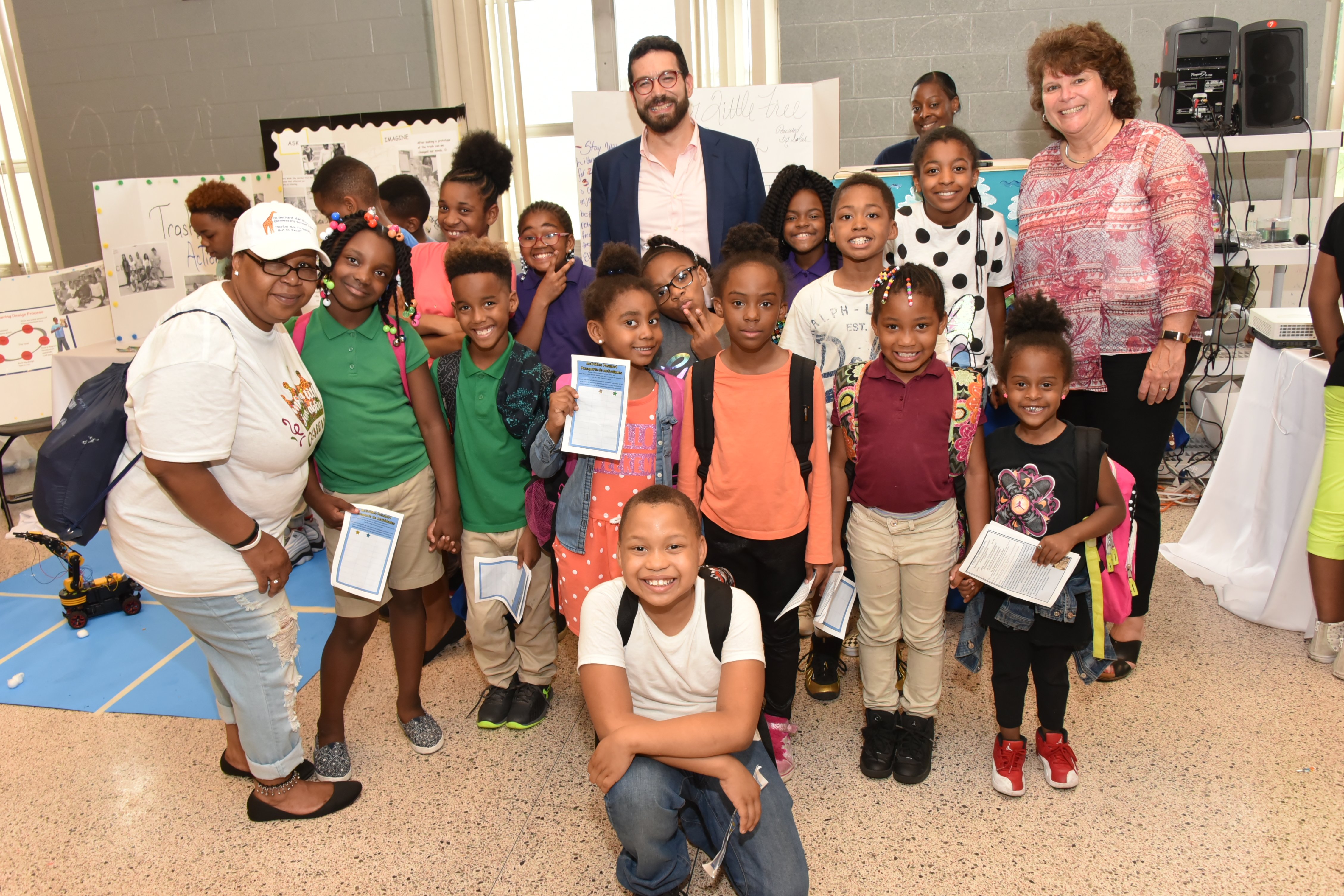Afterschool
The STEM Achievement in Baltimore Elementary Schools (SABES) Afterschool Program curriculum consists of units from the Engineering Adventures (EA) curriculum[2] in addition to independent STEM projects. Throughout the school year, students complete engaging, inquiry-based STEM projects. Partway through the year, classes break away from the structured curriculum to work on Student Driven Projects, during which students identify an area for improvement in their local community and use STEM in order to address it. For example, afterschool SABES students at Barclay Elementary/Middle School developed a mini-irrigation system to provide clean water to their school garden for their 2018 project.
In addition to the afterschool instructors, mentors (STEM professionals, retirees, JHU faculty, staff, post docs, graduate and undergraduate students) visit the afterschool program regularly to encourage the students, ask questions and share their own passion for and path to a STEM career.
SABES afterschool curriculum features engineering design challenges in each unit. In order to complete the design challenges, students utilize the Engineering Design Process, as developed by the Museum of Science, Boston[3].
The Engineering Design Process, much like the scientific method, guides students through the steps necessary for solving a problem or answering a question using science and engineering. The five steps of the Engineering Design Process used in SABES – as well as questions to ask and actions to complete for each step – are as follows:
After students improve upon their first design, they may want to begin the Engineering Design Process all over again to refine their technology, or they may want to focus on one step. As it follows a cycle, the Engineering Design Process can be used again and again!
In real life, engineers rarely end up with the best idea on their first attempt and often work on just one or two steps before passing along their work to another team member or team.
Curriculum Sequence
| Unit 1 | Unit 2 | Unit 3 | |
|---|---|---|---|
| Grade 3 | Hop to It: Safe Removal of Invasive Species (EA) | To The Rescue: Engineering Aid Drop Packages (EA) | Student Driven Projects |
| Grade 4 | Light up the Night: An Electrical Engineering Challenge (EA) | In Good Hands: Engineering Space Gloves (EA) | Student Driven Projects |
| Grade 5 | Shake Things Up: Engineering Earthquake-Resistant Buildings (EA) | A Slippery Slope: Engineering an Avalanche Protection System (EA) | Student Driven Projects |
Unit Descriptions
-
Unit: Hop to It: Safe Removal of Invasive Species (EA): Students will learn about invasive species and their negative effects on ecosystems. They will design a humane trap that could be used to catch cane toads, an invasive species in Australia.
Unit: To The Rescue: Engineering Aid Drop Packages (EA): Students will engineer “aid drop packages” that can be dropped from an aircraft, protect what’s inside, and are easy to find once they reach the ground.
-
Unit: Light up the Night: An Electrical Engineering Challenge (EA): After experimenting with circuits and sculpting materials, students will design a light display that replicates the Northern Lights.
Unit: In Good Hands: Engineering Space Gloves (EA): Students work as materials engineers, considering the trade-offs of each material in their space gloves to help astronauts complete one of three missions to an asteroid, Earth’s moon, or Mars.
-
Unit: Shake Things Up: Engineering Earthquake-Resistant Buildings (EA): Students will engineer model buildings that are earthquake resistant. They’ll also develop building codes that help others build earthquake-resistant structures.
Unit: A Slippery Slope: Engineering an Avalanche Protection System (EA): Students use what they learn from designing barriers and catches to engineer an avalanche protection system.
[2] The Engineering Adventures curriculum was developed by the Museum of Science, Boston, specifically for afterschool programs. The units integrate literacy and social studies in STEM as they feature stories about real issues and problems in different countries around the world. For more information about the curriculum, please visit their website at: http://www.eie.org/content/engineering-adventures.
[3] Modified from: “The Engineering Design Process.” Engineering Is Elementary. Museum of Science, Boston, 2013. Web. 04 Sept. 2013. http://www.eie.org/content/engineering-design-process.
[4] “Test” was added to the “Create” step of the original model by the SABES team. It is important that students test their designs in order to evaluate their effectiveness and to determine what kinds of improvements (if any) should be made.


